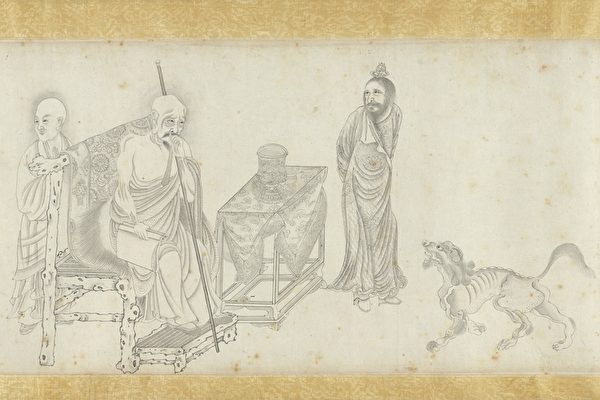Taiwan’s National Palace Museum announced that with the warm spring weather in April, it is the perfect time for spring outings. The museum’s northern branch has launched the second season of “Treasures Focus” to showcase precious artifacts and invite the public to appreciate the elegance of calligraphy and painting, and to share in the beauty of springtime.
The museum stated that the northern branch is presenting the second season of “Treasures Focus,” “Brush Songs and Ink Dances – Guided Tour of Palace Paintings,” “Large Masterpieces,” “Guided Tour of Calligraphy at the Palace,” and “Emotion in a Square Inch,” showcasing a new perspective and exhibiting national treasures such as the “Song Dynasty Li Tang Steamed Mugwort Picture,” masterpieces of calligraphy and painting from various dynasties, as well as imperial collections and donated printing blocks.
The northern branch of the National Palace Museum selects one national treasure in each season of “Treasures Focus.” This season features the national treasure “Song Dynasty Li Tang Steamed Mugwort Picture.” The painting depicts a scene where a traditional Chinese medicine doctor is using burning mugwort sticks for treatment on a patient. The patient appears to be struggling in pain, vividly portrayed with exaggerated and humorous techniques, embodying the conventions of Southern Song figure paintings.
“Brush Songs and Ink Dances – Guided Tour of Palace Paintings” brings together the essence of historical figures, landscapes, and flora and fauna paintings, creating a symphony of brilliance. The “Ming Dynasty Ding Yunpeng Fine Brush Drawing of Arhats” faithfully imitates the Arhats painted by the Song dynasty artist Li Gonglin, with each character having its own pose, smooth lines, and powerful brushstrokes.
The painting “Ming Dynasty Xia Chang Drawing of Bamboo” depicts water, shores, rocks, and bamboo leaves overlapping in a rhythmic manner, using ink to distinguish the depth, and exhibiting strong and swift brushwork. The painting “Donglin Gathering” by the Ming Dynasty master Qiu Ying shows two scholars conversing in a pavilion, with a servant preparing tea, surrounded by winding streams, mist in the distance, swaying peach trees, and a well-balanced composition that presents a picturesque scene full of poetic charm.
The exhibition “Emotion in a Square Inch” displays imperial collections and donated printing blocks. Wu Songfen, assistant researcher at the Department of Calligraphy and Painting Documents, explained that the art of seal carving has a long and illustrious history, encompassing various styles from ancient seals of the pre-Qin period to the renowned schools of the Song, Yuan, Ming, Qing, and Republic of China periods.
These seal engravings include personalized seals, official seals, private seals, various leisure seals, and collection seals, which are used to create “stamp impressions,” “stamp screens,” or “printing block books,” demonstrating the final seals after carving. The purpose is to collect seal patterns and verify inscriptions for the purpose of study, appreciation, and practice.
The museum also displays seal engravings and rubbings by renowned artists such as Wang Zhuang, Fang Jiekan, and Jiang Zhaoshen, bringing together the elegance of the ages for the public to appreciate.
责任编辑 (Responsible Editor): Lin Yan.

